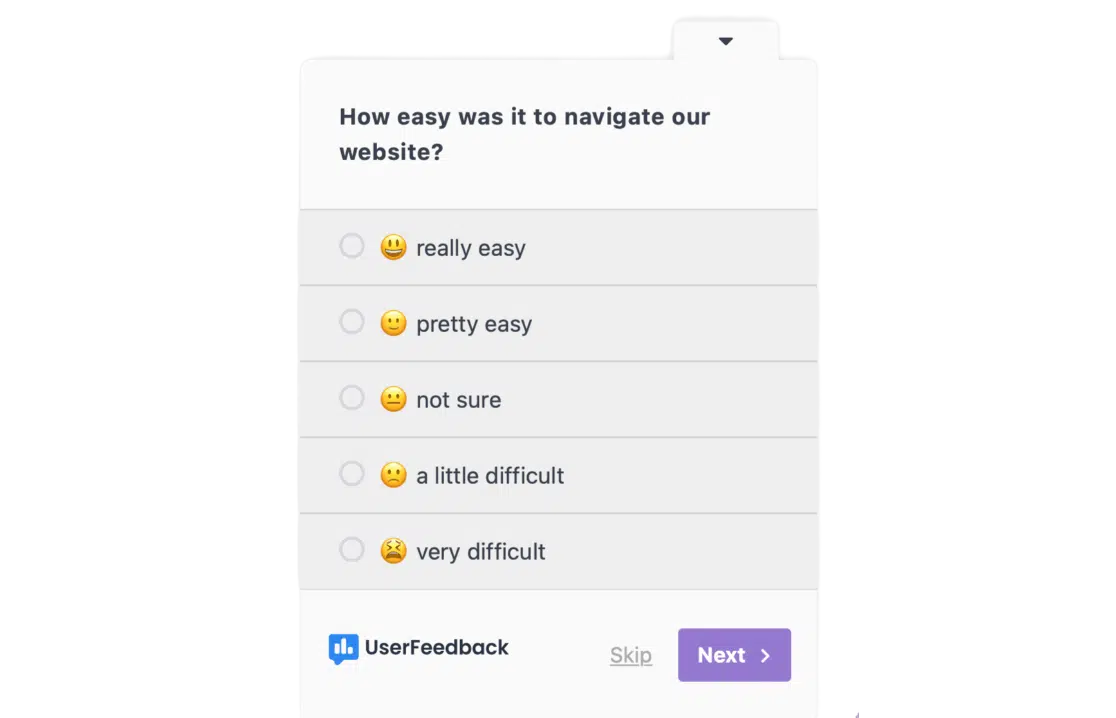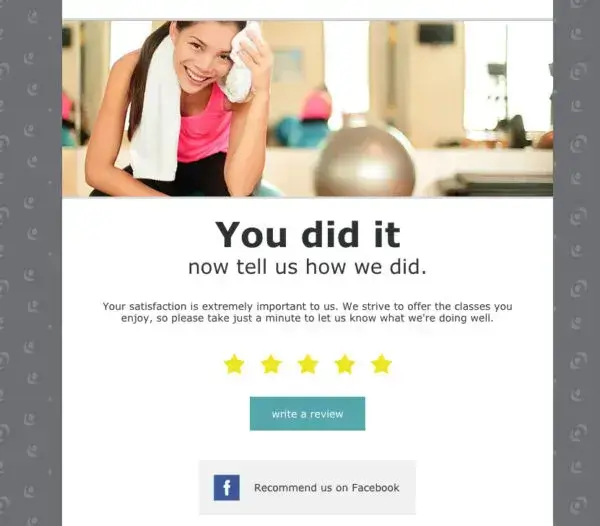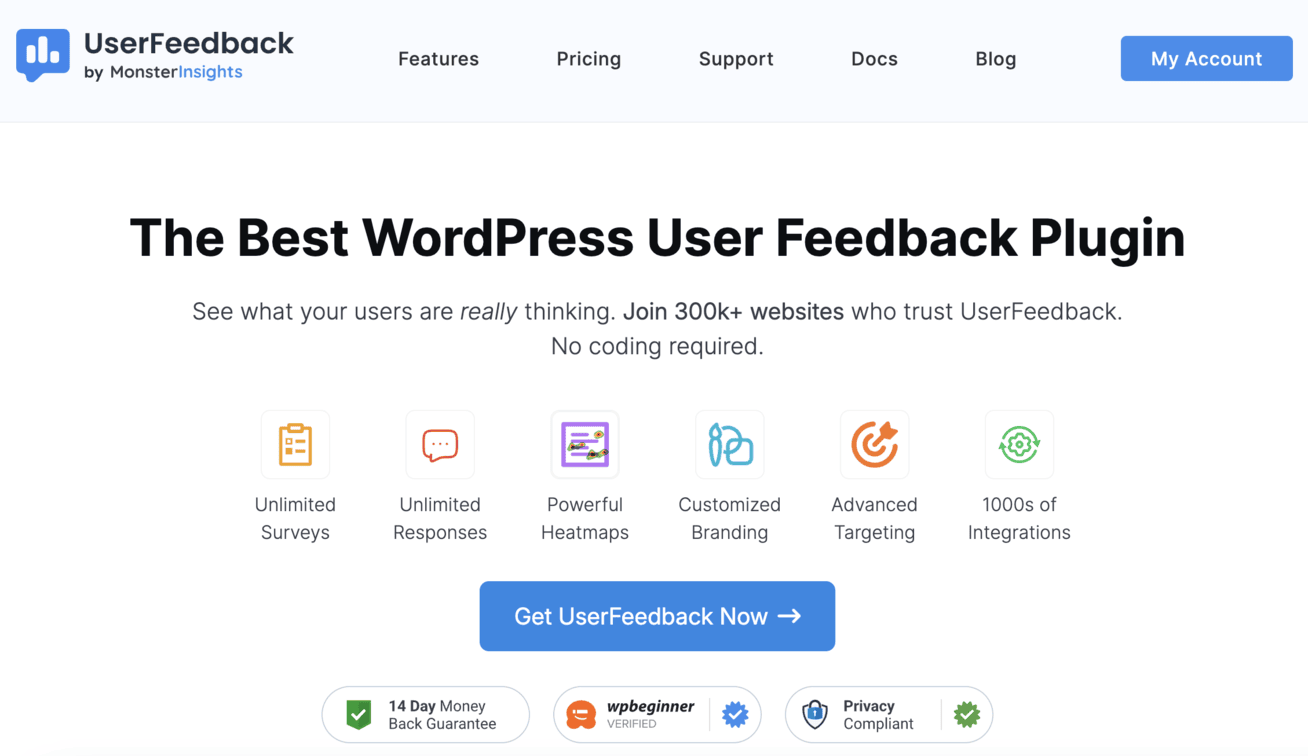Running any type of business means customer feedback is your most valuable asset. I’ve learned through my years of experience that understanding what your customers really think about your products and services can make or break your success.
Without it, you’re essentially flying blind, missing critical insights that could propel your business forward.
After working with hundreds of businesses on their feedback strategies, I’ll share everything you need to know about customer feedback.
We’ll explore what customer feedback actually means, dive into how you should be using the customer feedback loop, and reveal the best ways to collect and analyze customer feedback effectively.
Let’s get started!
Table of Contents:
- What Does Customer Feedback Mean?
- Why Is Customer Feedback so Important?
- Understanding Customer Feedback: The Complete Analysis Process
- The Customer Feedback Loop: Your Blueprint for Continuous Improvement
- How to Use Customer Feedback: 6 Proven Collection Methods
- Best Tool for Collecting Feedback Online
- FAQs
What Does Customer Feedback Mean?
Customer feedback is the information, insights, opinions, and input that customers share about their experiences with your company, products, or services.
This includes everything from formal survey responses and product reviews to casual comments on social media and support interactions.
I think of customer feedback as a direct conversation with your customers’ minds and hearts. It tells you what’s working, what isn’t, and what your customers actually want, not what you think they want.
Customer feedback typically falls into two main categories:
- Solicited Feedback: Information you actively request through surveys, interviews, feedback forms, or direct outreach.
- Unsolicited Feedback: Spontaneous feedback that customers provide without being asked, such as social media comments, online reviews, or support tickets.
Both types are equally valuable, but unsolicited feedback often provides the most honest insights since customers aren’t responding to leading questions.
Why Is Customer Feedback so Important?
Understanding customer feedback isn’t just nice to have—it’s absolutely essential for business survival. 77% of customers view brands more favorably if they proactively seek and apply customer feedback, yet many companies still aren’t leveraging this powerful resource effectively.
Here’s why gathering customer feedback is crucial for your success:
- Foster Loyalty: 72% of consumers believe that companies that ask for feedback care more about providing good service. When you actively seek input, you’re showing customers their opinions matter, which builds stronger emotional connections.
- Drive Revenue Growth: Companies that focus on CX see an 80% increase in revenue. Understanding what makes customers happy translates directly into better business outcomes.
- Prevent Customer Loss: Here’s a sobering statistic—96% of unhappy customers don’t complain directly to the company, but simply leave and never come back. Without feedback systems in place, you might never know why customers are walking away.
- Improve Your Business: Feedback doesn’t just highlight what’s going well; it pinpoints exactly where you’re dropping the ball. Whether your product needs tweaks or your customer service needs a revamp, feedback provides actionable insights for improvement.
- Create Compelling Marketing: Customer feedback is a treasure trove for marketing. Their exact words can make your homepage or landing page come alive, resonating with what potential customers are searching for.
- Generate Content Ideas: Turn feedback into valuable content like blog posts, Q&As, or knowledge-base articles. It’s a resource that keeps giving!
The reality is stark: 73% of consumers will switch to a competitor after multiple bad experiences. Customer feedback acts as your early warning system, helping you catch issues before they become costly problems.
Understanding Customer Feedback: The Complete Analysis Process
Understanding customer feedback goes far beyond simply collecting responses. I’ve found that most businesses struggle not with gathering feedback, but with making sense of it all.
Only 3% of companies are currently categorized as customer-obsessed, which means there’s a massive opportunity for businesses that get this right.
Types of Customer Feedback You Need to Know
- Quantitative Feedback: Numerical data like survey scores, ratings, and metrics such as Net Promoter Score (NPS), Customer Satisfaction Score (CSAT), and Customer Effort Score (CES). This gives you measurable benchmarks to track over time.
- Qualitative Feedback: Open-ended responses, detailed comments, and narrative feedback that provide context and emotional insights behind the numbers.
- Behavioral Feedback: Actions customers take that indicate satisfaction or dissatisfaction, such as repeat purchases, cancellations, or support ticket frequency.
- Contextual Feedback: Input gathered at specific touchpoints in the customer journey, helping you understand experience quality at crucial moments.
The Four-Step Feedback Analysis Framework
I use this proven framework to help businesses extract maximum value from their customer feedback:
Step 1: Categorize Your Feedback
Sort responses into themes like product quality, customer service, pricing, and user experience. This helps you identify patterns and prioritize improvements.
Step 2: Identify Sentiment Patterns
Look for emotional indicators in the language customers use. Are they frustrated, delighted, confused, or indifferent? The sentiment often matters more than the specific words.
Step 3: Prioritize by Impact
Not all feedback deserves equal attention. Focus first on issues that affect large numbers of customers or have significant revenue implications.
Step 4: Track Trends Over Time
Single data points can be misleading. I always look for patterns that emerge over weeks or months to identify true trends versus isolated incidents.
The Customer Feedback Loop: Your Blueprint for Continuous Improvement

The customer feedback loop is an ongoing process that involves collecting feedback, analyzing it, taking action, and then coming full circle by reaching back out to your customers. This loop ensures your business evolves with customer needs, creating better experiences and fostering loyalty.
Read our Guide: The Positive vs. Negative Customer Feedback Loop
Here’s how I implement the four-step process:
Step 1: Ask for Customer Feedback
Gathering customer feedback starts with asking the right questions in the right places. I’ve learned that timing and channel selection can dramatically impact response quality and quantity.
- Choose Multiple Channels: Use email surveys, social media polls, website pop-ups, and in-app notifications. The key is meeting customers where they already are.
- Tailor Your Questions: Depending on your goal, your survey questions will vary. Use Net Promoter Score (NPS) to gauge customer loyalty, Customer Satisfaction Score (CSAT) for specific interactions, or open-ended questions for detailed insights.
- Keep It Simple: The easier it is to provide feedback, the more likely customers will participate. Short surveys with focused questions often have significantly higher response rates.
Step 2: Analyze Your Customer Feedback
Once you’ve collected feedback, systematic analysis is critical for extracting actionable insights. This is where many businesses stumble—they collect tons of data but struggle to turn it into meaningful improvements.
- Categorize Systematically: Separate feedback into distinct categories such as product issues, service quality, pricing concerns, and feature requests. This helps in spotting trends and understanding where improvements are needed most.
- Identify Patterns: Look for common themes that arise across responses. Are customers repeatedly mentioning a feature they’d like improved? Are there consistent compliments about your customer service team?
- Use Analytics Tools: Leverage feedback management tools to streamline the process. These technologies can help with tagging, sorting, and sentiment analysis, ensuring you don’t miss critical insights.
Read our guide on How to Perform Customer Feedback Analysis (Step-by-step) to learn more.
Step 3: Create Strategies and Act on Feedback
With analyzed data in hand, it’s time to transform insights into actionable plans. I’ve seen too many companies get stuck in “analysis paralysis”—collecting feedback endlessly without taking meaningful action.
- Prioritize Quick Wins: Focus on feedback that can have the most significant impact first. Simple fixes like updating confusing website copy or fixing broken processes can be resolved immediately and show customers you’re listening.
- Communicate Plans Internally: Let your team know what changes will be implemented and why. This transparency boosts morale and aligns everyone toward common goals.
- Implement and Monitor: Execute the changes and continuously monitor how they affect customer satisfaction. Track metrics before and after implementation to measure success.
Step 4: Follow Up and Repeat
The loop doesn’t close until you reach back out to customers who provided feedback. This step is crucial but often overlooked—it’s what transforms a one-time interaction into an ongoing relationship.
- Acknowledge Contributions: Send personalized thank-you messages to customers who provided feedback, letting them know their input was valued and acted upon.
- Share Success Stories: Use newsletters or social media to broadcast changes you’ve made as direct results of customer feedback. This shows all customers they are heard and appreciated.
- Keep the Conversation Going: Encourage continued feedback through follow-up surveys or community forums where customers can share ongoing thoughts.
Repeating this process continuously helps your business remain adaptable and keeps you connected with your customers’ evolving needs.
How to Use Customer Feedback: 6 Proven Collection Methods
Based on my experience helping businesses implement feedback systems, these six methods consistently deliver the highest quality insights:
1. Customer Feedback Surveys
Surveys remain my go-to method for collecting structured feedback. Their versatility makes them perfect for gathering both quantitative and qualitative data efficiently.
By crafting a well-thought-out survey, you can pinpoint specific areas where your business is excelling or needs improvement.
Tailor your surveys to align with your business goals. For example, use a Net Promoter Score (NPS) to measure general loyalty, or apply Customer Satisfaction Scores (CSAT) to go deeper into specific interactions. Using CES surveys is also great for seeing how easily your customers complete tasks:

Best Practices I’ve Learned:
- Keep surveys under 5 minutes for maximum completion rates
- Use logic branching to make surveys feel personalized
- Mix question types (ratings, multiple choice, open-ended) for comprehensive insights
- Offer small incentives like discounts or contest entries to boost participation
For example, after a customer makes a purchase, trigger an email survey asking about their shopping experience, product satisfaction, and likelihood to recommend.
2. Email Campaigns
Email provides a personal touch when reaching out for feedback. I’ve found that personalized emails significantly outperform generic feedback requests.
When crafting feedback emails, make your request clear and simple, and include a direct link to a short survey for quick responses.
Like this example:

Key Strategies:
- Reference specific purchases or interactions in your subject line
- Keep the email brief with a clear call-to-action
- Include a direct link to a short survey (no more than 3-5 questions)
- Send follow-up reminders to non-respondents after 3-5 days
3. Strategic Contact Forms
Contact forms on your website capture unsolicited feedback—often the most valuable kind. Place these forms strategically in help sections, after checkout, or on high-exit pages.
Placing these forms strategically—such as in the help or feedback sections of your website—enables customers to voice their opinions at any time. This approach captures a wide range of thoughts, often revealing issues or praises that structured surveys might miss.
Make sure your forms are mobile-optimized and ask for just the essential information. I recommend including fields for contact info (optional), issue category, and detailed feedback.
4. Customer Interviews
While surveys give you breadth, interviews provide depth. I conduct customer interviews when I need to understand the “why” behind survey responses or explore complex issues.
Conducting customer interviews provides a wealth of deep, qualitative insights. These conversations allow you to explore customer experiences, motivations, and unmet needs in a more personal way.
Interview Best Practices:
- Prepare open-ended questions but be flexible
- Record sessions (with permission) for later analysis
- Create a comfortable, conversational atmosphere
- Follow up on interesting responses with probing questions
Also consider recording these interviews (with permission). This allows you to compare your results with other channels better and go back to the most important points again.
Read our full guide on Qualitative Feedback (Plus Examples).
5. Usability Testing
Usability tests provide direct insights into how customers interact with your products or services. I observe users performing specific tasks and note where they struggle or excel.
By observing users as they perform specific tasks, you can identify usability issues and areas that might frustrate or please your customers.
This method is particularly valuable for digital products, websites, or any customer-facing processes. The real-time feedback is invaluable for identifying friction points.
6. Social Media Monitoring
Social media provides unfiltered, honest feedback—both positive and negative. I use social listening tools to monitor brand mentions, hashtags, and competitor discussions.
Platforms like X, Facebook, and Instagram allow customers to express their opinions freely, often providing honest and unfiltered insights.
Pro tip: Don’t just monitor your own mentions. Track industry-related conversations to understand broader customer pain points and opportunities.
Running campaigns, polls, or Q&A sessions can actively solicit feedback and make customers feel part of the conversation.
By analyzing these interactions over time, you can detect trends and shifts in customer perceptions, helping you stay ahead of the curve.
Read our full Guide: Collect Customer Feedback on Social Media (8 Proven Tactics)
Best Tool for Collecting Feedback Online
If you’re excited to dive into the world of online surveys and ready to start collecting invaluable responses from your visitors, you might be wondering what the best tool is for the job. In my experience, UserFeedback stands out as the best choice for WordPress users.

UserFeedback is the leading feedback plugin designed to help you effortlessly craft and manage effective surveys without any need for code. Its intuitive interface and robust capabilities make it a favorite for gathering authentic feedback from your visitors.
Why I Recommend UserFeedback
UserFeedback offers everything I look for in a feedback platform:
- Unlimited Surveys and Responses: Gather as much feedback as you need without worrying about limitations
- Pre-made Templates: Quick-start your surveying efforts with proven templates
- Conditional Logic: Personalize follow-up questions based on initial responses
- Advanced Targeting: Show surveys to the right people at the optimal time
- Google Analytics Integration: Enhanced reporting through MonsterInsights
The setup takes just minutes, and you can deploy sophisticated surveys without writing a single line of code. With these features at your fingertips, you can set up and deploy a survey in minutes, collecting valuable feedback without the hassle of coding. This feedback is crucial for refining your products, giving your customers what they love, and driving your business forward.
Ready to start collecting valuable feedback? Try UserFeedback today!
That officially wraps up my comprehensive guide to customer feedback. I’ve shared the strategies and insights that have helped countless businesses transform their customer relationships and drive measurable growth.
To dive deeper into specific feedback strategies, check out these related resources:
- The Ultimate Guide to Website Feedback
- 44 Customer Survey Questions + Guide to Meaningful Feedback
- 20 Customer Satisfaction Survey Examples & Templates to Use
- How to Get and Improve Your Customer Effort Score
- How to Improve Customer Service: 12 Practical Tips
And don’t forget to follow us on X and Facebook to learn more about gathering user feedback online and leveraging it to grow your business.
FAQs
How do you collect customer feedback effectively?
The most effective methods include customer surveys, email campaigns, website feedback forms, customer interviews, usability testing, and social media monitoring. The key is using multiple channels and making it easy for customers to provide input. Keep surveys short, personalize your outreach, and always follow up on the feedback received.
What’s the difference between qualitative and quantitative customer feedback?
Quantitative feedback includes numerical data like ratings, scores, and metrics (NPS, CSAT, CES) that can be measured and tracked over time. Qualitative feedback consists of open-ended responses, comments, and narrative feedback that provides context and emotional insights behind the numbers. Both types are essential for a complete understanding of customer experience.
How often should you collect customer feedback?
Customer feedback collection should be ongoing rather than periodic. Implement continuous feedback systems like post-purchase surveys, regular check-ins with long-term customers, and real-time feedback options on your website. For formal surveys, quarterly or bi-annual surveys work well, supplemented by targeted surveys for specific events or changes.
What should you do with negative customer feedback?
Negative feedback is valuable for improvement. Acknowledge it promptly, thank the customer for their input, apologize if appropriate, and explain what actions you’re taking to address their concerns. Use negative feedback to identify patterns and systemic issues. Remember, 96% of unhappy customers don’t complain directly—they just leave—so those who do provide negative feedback are giving you a valuable opportunity to improve.



